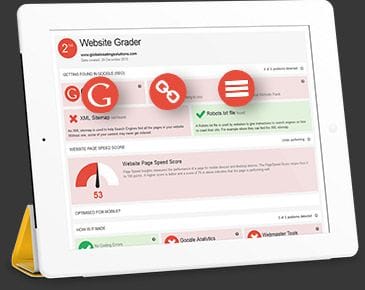What is E-A-T? (and Why it's important for SEO)
)
What Does the E-A-T Acronym Stand For?
The E-A-T acronym stands for Expertise, Authority and Trust, and was created by Google.
Your website's E-A-T involves some of the key factors that Google uses to measure how trustworthy your website or brand is in relation to how they answer to search engine inquiries - Each of these three words represents a measurement of a business's right to be considered a leader in their field, no matter what industry or niche they may fall into.
Obviously, Google wants to give their search engine users (their customers), the most seamless and best experience possible. Therefore, E-A-T helps Google decide how much trust they should have in your website and how much it should be promoted to their search engine users.
Though it doesn't directly have an impact on rankings, E-A-T creates signals of trust and credibility that drive the improvement of your ranking and how much trust Google has in your website.
Let's Break Down E-A-T
Expertise
In the words of Google, websites of high quality "need enough expertise to be authoritative and trustworthy on their topic." Expertise is defined by the Oxford English Dictionary as "Expert skill or knowledge in a particular field." If you offer a service or product that you have deep knowledge about, you could be classified as an expert in that field especially if you can demonstrate that your knowledge level matches or exceeds that of your competition.
Regardless of what your product or service is, you should be able to show potential customers that you're an expert in this field - more importantly, that you're more of an expert than your competitors.
Consider if you were physically standing amongst your competitors. You'd want to demonstrate why the customer should choose you over your competitors by showing that you've got the skills to solve their consumer problems; that you have the most in-depth knowledge and refined skills in whatever it is you do. This remains true for your website as well.
No matter what your field of expertise is, if you can establish that your level of expertise is higher than the competitors closest to you, you can outperform them.
Authoritativeness
Authority refers to you and your website's reputation as an entity that is considered accurate, credible and reliable. Similarly, authority or "authoritativeness" is a person or website of whom or that is "Able to be trusted as being accurate or true; reliable."
While similar to expertise, authority is slightly different. Expertise is a measurement of your skill and knowledge, whereas authoritativeness is measured by how well your content stands apart from others.
When a search is conducted online, the searcher is not only looking for an expert they can trust, but they want to be certain this person is the best person to go with this query. Google not only is considering whether you're an expert in the content you're creating, but if it's also the most authoritative content available.
Trustworthiness
Trust is a huge factor when it comes down to search engine rankings - it's a measurement of how much credence your website and it's content has. Additionally, search engines want to ensure they're ranking websites that don't just create a lot of content, but create content that's of the highest quality that searchers can rely on to be honest and truthful. Trustworthiness, or "The ability to be relied on as honest or truthful", is the measurement of how much credence your brand, website or content has.
Website raters also look considerably on whether or not the site states who is responsible for published content and whether they're a credible author. Including sufficient contact information for the business or brand is also considered of high importance as a trustworthiness factor.
Google, as it's always done, considers backlinks an indicator of trustworthiness in a website. If the domain linking to your website has a high trust consideration, the greater this reflects on the trustworthiness of your website, too.
Ultimately, a website that displays trust symbols such as security symbols, testimonials, free trials etc. help build confidence in potential customers to follow through with the conversion.
Why is E-A-T important?
When a user comes across the website of a brand or business they're considering, they're likely to seek out an alternative if that website lacks expertise, authoritativeness and trustworthiness.
In the same manner, Google seeks out signals that indicate whether or not your website engages these three components and decides accordingly whether to rank your website higher or not. If another website has better signals of expertise, authoritativeness and trustworthiness - they'll send traffic their way instead. Additionally, although E-A-T is important for all search queries, it is more important for some than others.
If you're a business related to health where the information sought after could be critically important to someone's safety in any sense, then E-A-T is undoubtedly more important to Google. Moreover, personal safety also refers to services outside of health. For example: news outlets, financial information and legal advice are some examples of what fall into this category where E-A-T is more strongly considered.
Not only will the consideration of E-A-T factors reflect favorably on your website with Google, but the efforts taken to establish better E-A-T should also correlate with improving trust between your business and potential customers who visit your website, ultimately resulting in increased leads as well.
Is E-A-T an algorithm?
E-A-T is not a specific algorithm on it's own but Google's algorithms "look for signals both on and off-site that correlate with good or bad E-A-T."
Where does this term come from?
E-A-T is an acronym that comes from Google's publicly available Search Quality Rater Guidelines which helps form an understanding of how Google rates web pages - consisting of 164 pages, equating to an approximate five-hour read.
The guide explains at length the full requirements and tasks of a Search Quality Rater, including:
- What is required for evaluating search results (a computer, a browser, no Ad-blocking plugins, etc.)
- What the most important definitions are (MC for Main Content; SC for Supplementary Content; E-A-T for Expertise, Authoritativeness and Trust, etc.)
- How to navigate through a website
- How to determine the author of content or who the owner of a website domain may be
- How to research the E-A-T of content creators using Google searches and other websites
- How to rate the quality of a page and its content
- What constitutes high-quality and low-quality content
- Which types of domains or pages require high levels of E-A-T (YMYL sites, which we'll come onto shortly, require high levels of E-A-T)
- Which types of pages, page design, or page usability could be defined as harmful to a user
- How to compare the mobile experience of a website to the desktop experience
- How to score domains and pages using a "Fully Meets User Needs" to "Fails to Meet User Needs" rating slider
Is there such a thing as an E-A-T score?
Google has previously confirmed that there is no official E-A-T score and no score is assigned to you.
E-A-T is a bit of a difficult topic to get your head around and takes time and effort to improve on your website. Despite the difficulties at hand, E-A-T is an integral aspect of your website and worth taking the time to understand and craft your SEO strategy with these factors at the forefront of your mind.
Key Takeaways:
- E-A-T stands for expertise, authoritativeness and trustworthiness.
- It's not an algorithm in itself but composed of signals that indicate whether your website has good or bad E-A-T.
- There is no E-A-T ranking score.
- This knowledge is important to your business because a proper understanding can help you craft your SEO strategy.
- E-A-T is particularly important for searches that can affect an individuals health, financial well being or personal safety in any sense.
- Working on your E-A-T should also correlate to increased trust with potential customers.
If you want to rank higher on Google or want help with your website's E-A-T, feel free to reach out to one of your internet marketing specialists on 1-844-448-6657 for more information, or book a consultation today.
| Tags:Search Engine MarketingInternet MarketingSearch Engine OptimizationBusiness Development |




)
)
)
